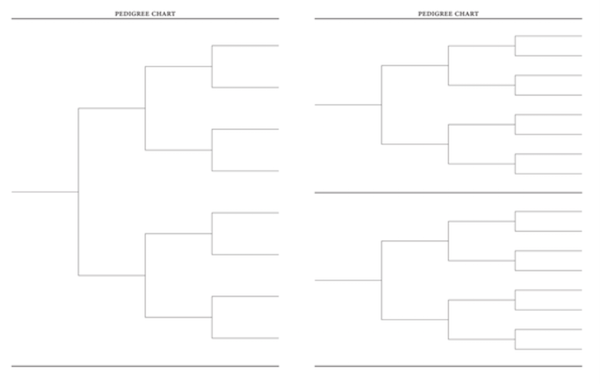
We suppose in a tortured sort of way, the diagram at the left sort of looks like a crane’s foot. Why should it? Because the diagram is a blank pedigree form, and the word, “pedigree,” is a corruption of the French phrase, “pied de grue,” or crane’s foot. Someone thought the typical lines and splits leading to different offspring of the one parent line resembled the thin leg and foot of a crane. That was the thinking, anyway. If there is a name for a person who collects pedigrees, we don’t know it, but over the years, we’ve known many people who would qualify for the name. We doubt any of them, however, could match Captain George August Graham.
Capt. Graham compiled over 800 pedigrees, and he it did it in 1894 without a computer, and presumably without a typewriter because even though the first typewriter was invented in 1829, calling it a typewriter would be generous. The first commercially successful typewriter was invented in 1868, and even then, the machines didn’t become common in offices until after the mid-1880s, and even then, this was in Milwaukee, Wisconsin, and our Capt. Graham was in Scotland. What was left to Capt. Graham was a collection of pedigrees recorded painstakingly by hand.
Capt. Graham’s pedigree compilation was of Scottish Deerhounds which he published in 1894. It was actually through his study of the Deerhound, however, that his interest in the Irish Wolfhound was piqued because he felt the two breeds were “the same in all but size and substance.” He got his first Wolfhound, “Faust,” in 1859, and from that point on, Graham devoted his life to the resuscitation of the Irish Wolfhound which was near extinction. Graham felt that the breed hadn’t died out, it just hadn’t been kept up to its original standard because of the lack of its natural prey. Graham acquired as many dogs as he could find that went back to the original form, and commenced his breeding program. He is largely credited for having revived the breed.
